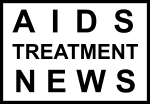AIDSmeds: "The “Berlin Patient”—a man living with HIV who underwent a transplant involving HIV-resistant stem cells in 2007 for the treatment of leukemia—has been classified as cured of his HIV, according to an update of the patient’s experience published online, ahead of print, on December 8 by the journal Blood. The man has remained off HIV treatment for three-and-a-half years with normal CD4 counts and no evidence of HIV replication.
"Though it was initially suspected that HIV archived in the man’s cells would begin proliferating once his immune system began to recover from pre- and post-transplantation treatment, this was not observed and the team monitoring the patient now conclude, 'our results strongly suggest that cure of HIV has been achieved in this patient.'"

1 comments:
The first fifteen patients, cured of their HIV infections by GcMAF supplementation, by the team of Dr. Nobuto Yamamoto, back in 2002, were followed for six-to-seven years to make sure their viral load didn't rebound and their CD4+ T cells didn't fall. These 15 ex-HIV+ patients are FAR MORE suggestive of a cure (in Young, Healthy, Recently HIV-infected Japanese patients) than a single individual undergoing extremely risky and extremely expensive bone marrow transplant with HIV-resistant donor-matched cells.
We are still waiting for the full paper to be published on the follow-up study which is claimed to have cured an additional 24 patients with both natural GcMAF supplementation (from pooled human blood plasma) AND something referred to as "cloned" GcMAF; which is a truncated (shortened) form of GcMAF. The claims of the follow-up study were made public in an early 2009 FOCIS conference abstract.
So, we have the teams of Dr. Yamamoto publishing peer-reviewed data on 39 cures, with an natural (and synthetic) intervention of a known pathogenic mechanism, and we can't seem to get anyone to pay attention. And we have a single case of a cure with an extremely risky, extremely expensive and not-readily-available treatment (donor matched cells with two copies of the 32-base pair deletion in the CCR5 gene) hogging all the media attention.
Which cure represents more profits for the medical-pharma-industry?
Post a Comment